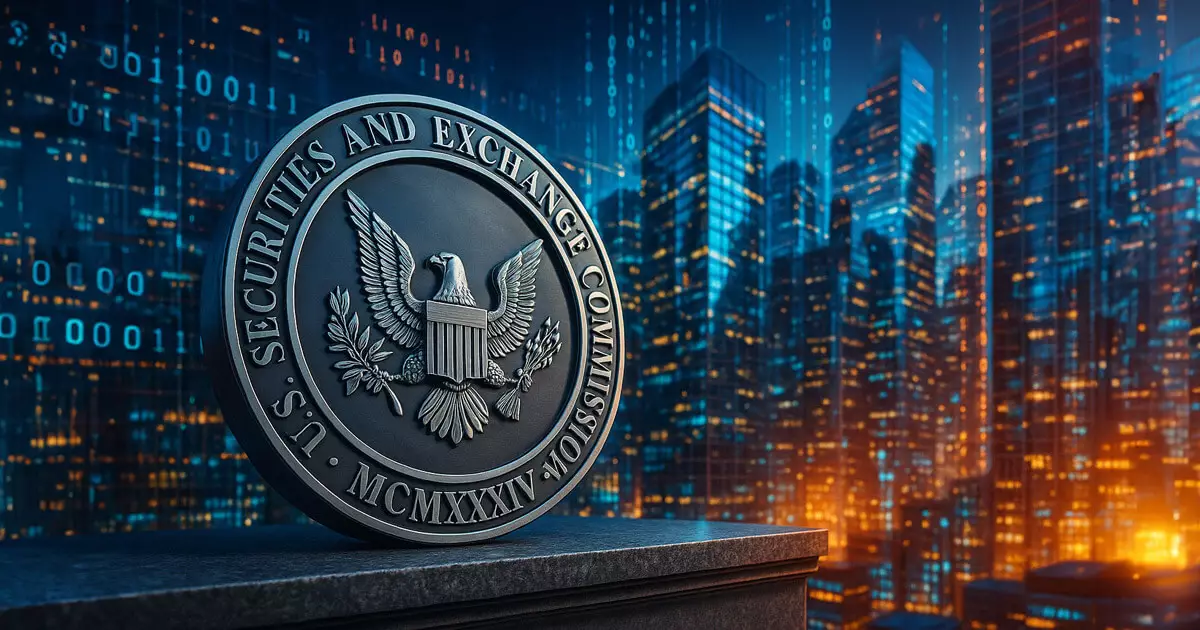Recently, the US Securities and Exchange Commission (SEC) initiated discussions that could signify a pivotal shift in the landscape of financial securities. Their Crypto Task Force is diving deep into the potential of public blockchain technology, presenting it as a vehicle for the issuance and trading of tokenized securities. This move does not just represent a minor tweak to existing financial structures but rather hints at a potential seismic shift in how we conceive financial transactions. The question remains: is this progress towards modernization, or is it a dangerous flirtation with untested technology?
This endeavor can be viewed as a progressive push, particularly from a center-right wing liberal viewpoint. On one hand, the SEC is tasked with protecting investors, which is fundamentally noble. Yet, on the other hand, it risks missing out on unprecedented opportunities for innovation. Tokenization, if applied correctly, can democratize investing, allowing smaller investors to access asset classes that were traditionally reserved for the wealthy elite. The rethinking of age-old regulations to allow for this innovation is paramount, but how much risk are we willing to embrace for the sake of progress?
The Necessity of a Regulatory Sandbox
During discussions with reputable entities such as Nasdaq and Plume Network, the idea of a regulatory sandbox was repeatedly mentioned. This concept serves as a controlled environment where new financial instruments can be tested without the full weight of conventional regulations. It allows innovators to trial their ideas while ensuring that investor protection remains intact. However, does this notion of a ‘sandbox’ obscure the need for a more comprehensive regulatory framework that can adapt to rapid technological changes?
What is disconcerting is the unyielding insistence from certain sectors that tokenized shares and other investment assets should remain under the existing registration rules. This begs the question: are we so bound by tradition that we cannot see the potential benefits that a well-regulated sandbox could provide? While Nasdaq and others expressed a desire for a ‘light-touch’ approach with parameters to work within, it seems overly cautious. If these negotiations prioritize a slow and steady approach, we risk stifling the innovative spirit that these discussions seek to ignite.
A New Era of Financial Structures
Moreover, as representatives from firms like Etherealize highlighted—there are impending problems tied to legacy regulations and traditional transfer agents. Current rules often inhibit efficient operations in the blockchain ecosystem. By forcing issuers to maintain off-chain ledgers, we diminish the efficiencies that blockchain offers. The call for the SEC to recognize secure blockchains as authoritative records is especially intriguing and suggests that the current framework is antiquated in the face of emerging trends.
The chance to integrate smart contracts into basic corporate functions such as dividend distribution and shareholder meetings cannot be overlooked. This is not merely a technical adjustment—it signifies the dawn of a transformative era in corporate governance. We cannot afford to gloss over these advancements while clinging to outdated notions of how stocks should operate.
The Clash of Taxonomy and Regulation
One cannot delve into the minutiae of these conversations without acknowledging the inconsistency and confusion surrounding classification. Clear taxonomy is crucial, as terms like digital assets and tokenized securities can mean different things to different people. Without clear definitions and modular rulebooks, there is a real risk of a regulatory quagmire that could stymie growth and confuse investors.
The fact that all representatives involved in these discussions advocated for enhanced clarity while ensuring investor protections indicates a significant convergence of interests. However, these industry players are not questioning the core mission of the SEC—rather, they are imploring it to evolve with the times. So why is there hesitation?
The SEC’s approach, while cautious, may inadvertently hinder technological advancement. Progress often requires a balance of risk and reward; thus, the prevailing mindset in these discussions needs recalibration for a truly innovative future.
The momentum is undoubtedly building as our financial world stands at the verge of a transformative leap, making it crucial that we do not let fear of the unknown skew our judgment in regulatory oversight. The dialogue initiated last week has the potential to reshape how we think about assets and their transactions—leading us into a the blockchain revolution that could redefine investing as we know it.

